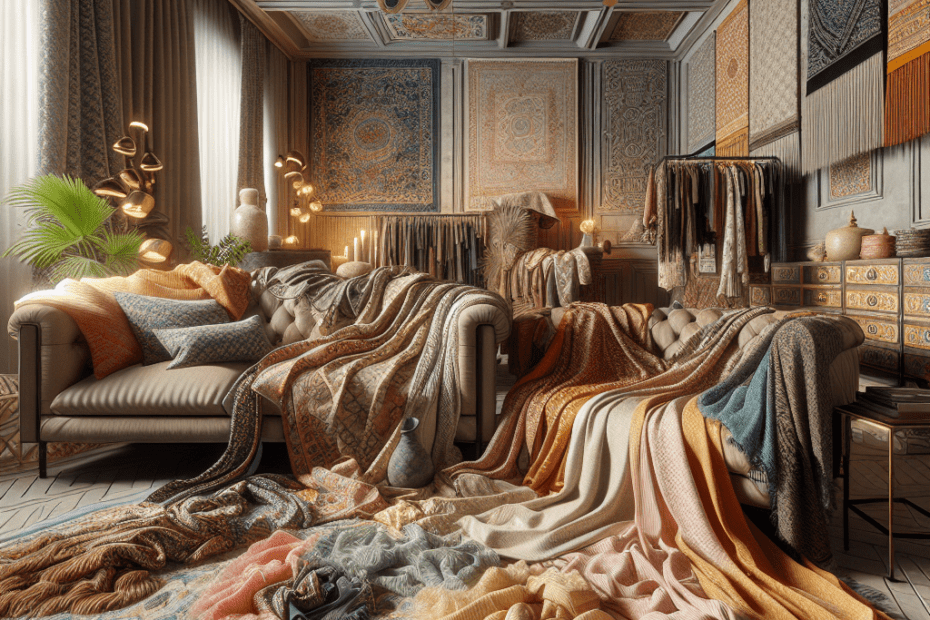Maximalist interiors thrive on the principle of “more is more,” and a key component in achieving this is the use
of layered fabrics. When they enter a maximalist room, they often find themselves enveloped by a tapestry of
colors, patterns, and textures that beautifully interplay with one another. The artful combination of these
elements is what creates a unique and inviting atmosphere, making everyone feel at home. For maximalism, each
choice is intentional, with fabrics serving as a base from which creativity flourishes.
The Power of Layered Fabrics
In the realm of maximalism, fabrics are not mere accessories; they are fundamental design tools. Layered fabrics
add depth and dimension to a room, allowing for an infusion of personal style. They utilize textiles in various
forms—think curtains, throw pillows, rugs, and upholstery—to craft a richly layered look. A survey by the
American Home Furnishing Alliance found that 74% of interior designers believe that fabric layering plays a
critical role in the success of maximalist interiors (source: American Home Furnishing Alliance).
| Fabric Element | Role in Maximalism | Common Materials |
|---|---|---|
| Rugs | Adds warmth and visual interest | Wool, cotton, polyester |
| Throw Pillows | Creates comfort and texture | Velvet, silk, linen |
| Upholstery | Provides color and pattern contrast | Leather, suede, cotton blend |
| Curtains | Frames spaces and adds height | Silk, velvet, sheer fabrics |
Diversity in Patterns and Colors
A hallmark of maximalist design is the bold use of color and patterns, where more is indeed more. They often
blend geometric shapes with florals, mixing various hues to create a lively yet cohesive look. This abundance
doesn’t translate to chaos; instead, it results in a harmonious environment that invites exploration. According
to a study by the Color Marketing Group, 62% of maximalist enthused spaces feature a combination of bold
patterns and vibrant colors (source: Color Marketing Group).
Texture as a Key Element
In maximalism, textures play an essential role next to colors and patterns. They rely on diverse textures to
provide contrast and depth. Layering different materials such as plush velvets, coarse linens, and smooth silks
can enrich the sensory experience, making each room a cozy and alluring escape.
Strategic Layering Techniques
Effective use of layered fabrics in maximalism requires a strategic approach. They focus not just on the number
of elements but on how they are arranged and interacted with each other. They create focal points in the room by
layering complementary textiles around furniture or architectural elements, ensuring the space is visually
captivating from every angle.
Environmental Consideration
As they indulge in maximalism, environmental consciousness is increasingly significant. Designers and
homeowners are seeking sustainable fabrics that offer both aesthetic appeal and eco-friendliness. The Global
Textile Market Report 2023 found that 48% of fabric production now includes environmentally sustainable
materials (source: Market Reports World).
Key Takeaways
- Layered fabrics are essential in creating depth and atmosphere in maximalist interiors.
- Color and pattern diversity enhance the visual appeal and express personal style.
- Texture provides tactile richness and enhances the sensory experience of a space.
- Strategic layering focuses on arrangement and complementarity.
- Environmentally sustainable fabrics are increasingly integral to modern maximalism.
Frequently Asked Questions
1. What is maximalism in interior design?
Maximalism embraces a “more is more” philosophy, utilizing a bold mix of colors, patterns, and textures to
create dynamic spaces.
2. Why is fabric layering important in maximalist interiors?
Layered fabrics add depth, texture, and variety, making spaces more inviting and personal while maintaining a
cohesive design.
3. How can I incorporate sustainable fabrics into my maximalist design?
Look for textiles made from recycled or organic materials, and consider brands that prioritize environmental
responsibility.
4. Can too much layering make a space feel cluttered?
When done strategically, fabric layering in maximalism enhances rather than clutters a space. Focus on balanced
arrangements and complementary colors.
5. Are there specific colors that work best in maximalist interiors?
While maximalism celebrates bold colors, there’s no set rule. It’s about expressing individual style, so choose
hues that resonate personally and blend well together.
